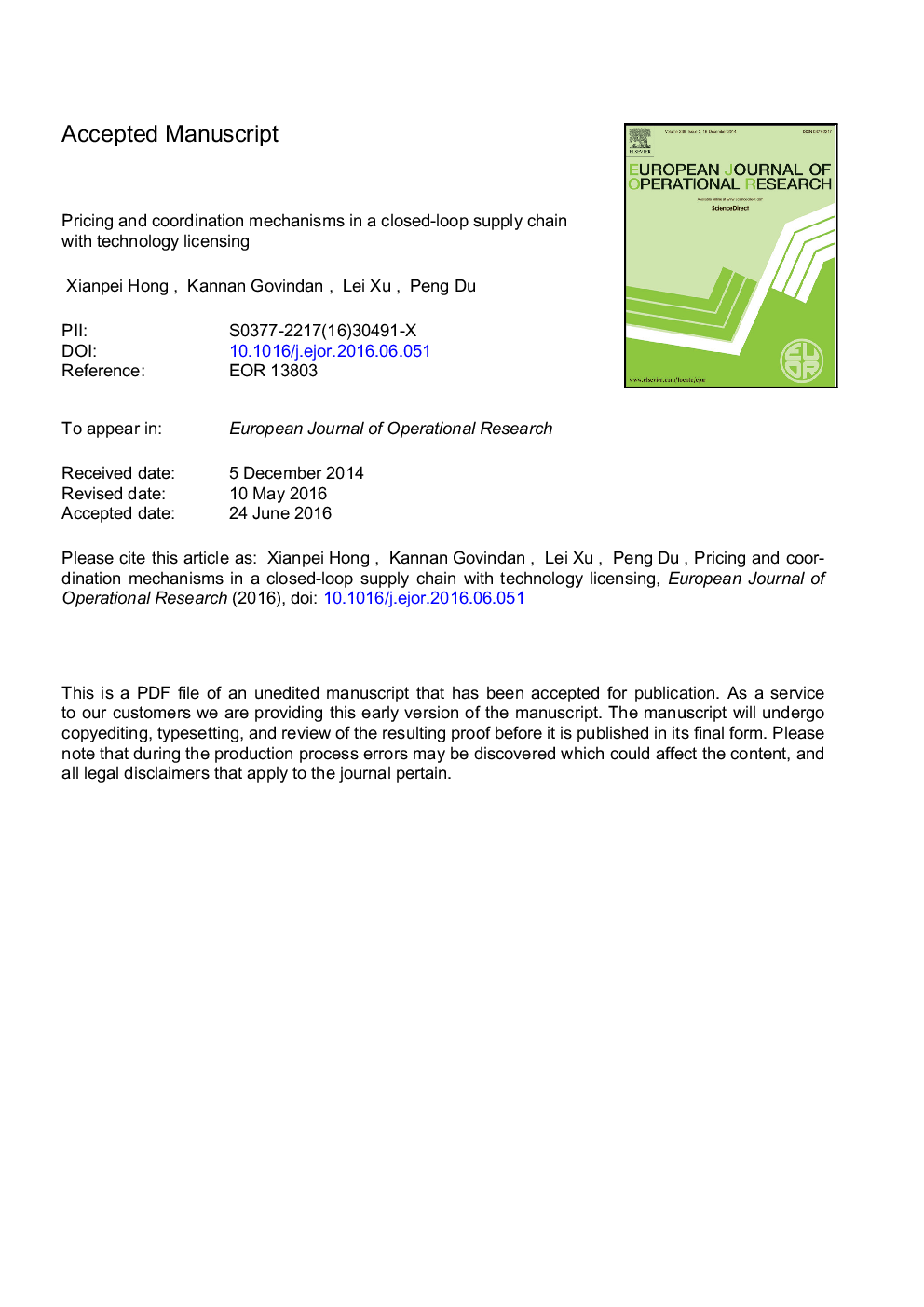| Article ID | Journal | Published Year | Pages | File Type |
|---|---|---|---|---|
| 4960156 | European Journal of Operational Research | 2017 | 23 Pages |
Abstract
Industry practice has shown that technology licensing has an important effect on the remanufacturing of patented products by third parties. Different licensing methods significantly impact a supply chain member's production and collection decisions, and they also have influential effects on reverse channel performance. However, there is scant literature investigating the decision on technology licensing and its impact on a supply chain member's production and collection decisions. To address this gap, we consider a manufacturer, as the patent holder, who produces new and remanufactured products and, simultaneously, he and a remanufacturer (as the licensee, who by law can only produce remanufactured products) competitively collects used products from the market in a two-period closed-loop supply chain (CLSC). We investigate two licensing patterns, fixed fee versus royalty, within the CLSC in a Cournot duopoly model. We find that royalty licensing is dominated by fixed fee licensing from the viewpoints of both the consumer surplus and environmental protection. Our result also shows that the manufacturer's optimal licensing strategy is determined by a threshold of the fixed fee: when the fixed fee is below a threshold, it is better for the manufacturer to use a royalty licensing, whereas fixed-fee licensing should be used when the fixed fee is higher than a threshold.
Related Topics
Physical Sciences and Engineering
Computer Science
Computer Science (General)
Authors
Hong Xianpei, Kannan Govindan, Xu Lei, Du Peng,
